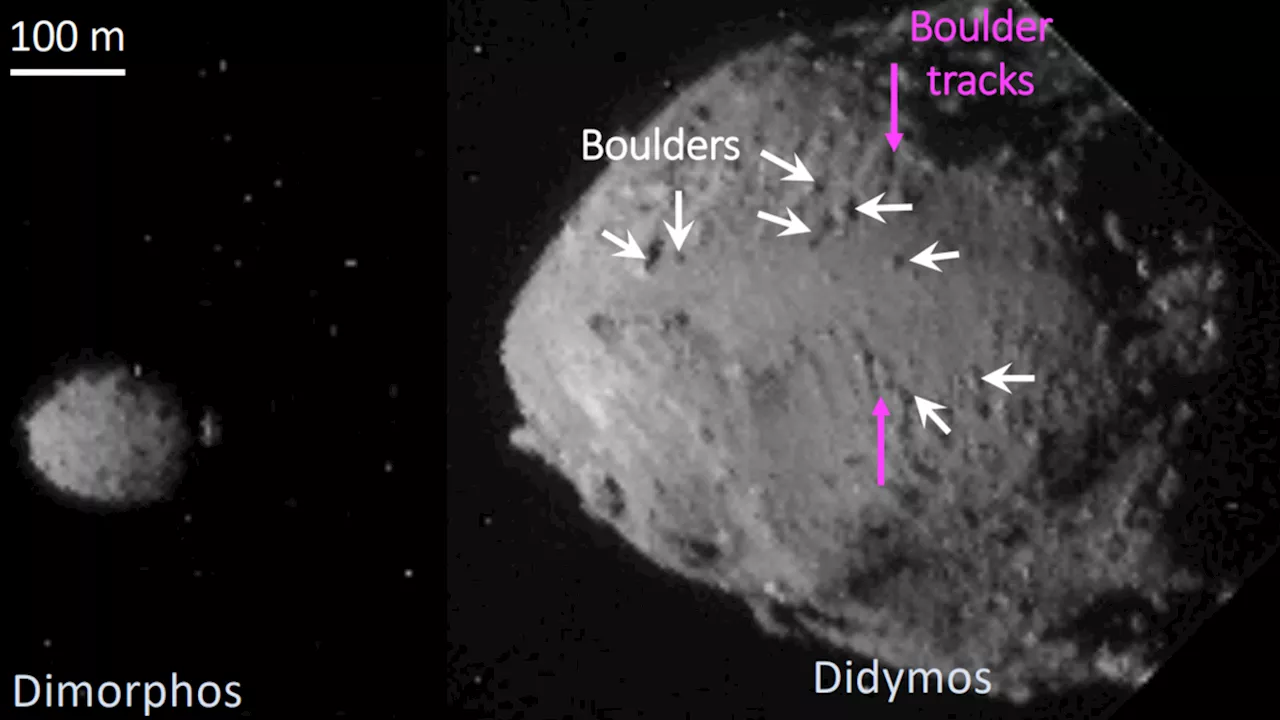Robert Lea is a science journalist in the U.K. whose articles have been published in Physics World, New Scientist, Astronomy Magazine, All About Space, Newsweek and ZME Science. He also writes about science communication for Elsevier and the European Journal of Physics. Rob holds a bachelor of science degree in physics and astronomy from the U.K.
An image of Didymos and Dimorphos comprising of data collected by DART , Hayabusa , Hayabusa-2 and OSIRIS-REX .'s DART asteroid impact mission to paint a more detailed picture of its asteroid targets Didymos and Dimorphos. The research could help better understand the formation and evolution of binary asteroids such as these.. Still, the aim was to see what influence such an impact would have on both bodies.
The team used the number of craters on both asteroids to gauge the ages of the two asteroids. they determined that the parent body Didymos is 12.5 million years old, between 40 to 130 times older than Dimorphos. They estimated the age of the moonlet to be around 0.3 million years.
Meanwhile, Alice Lucchetti, from the INAF-Astronomical Observatory of Padova also and colleagues found that boulders at the surface of Dimorphos are being fractured over a period of around 100,000 years by a process called"thermal fatigue," which results from changing temperatures causing micro-fractures in the rock.
A third team, led by Université de Toulouse researcher Colas Robin, compared 34 boulders on the surface of Dimorphos that ranged from 5.5 feet to 22 feet to rocks found on the loose"rubble-pile" asteroids
United States Latest News, United States Headlines
Similar News:You can also read news stories similar to this one that we have collected from other news sources.
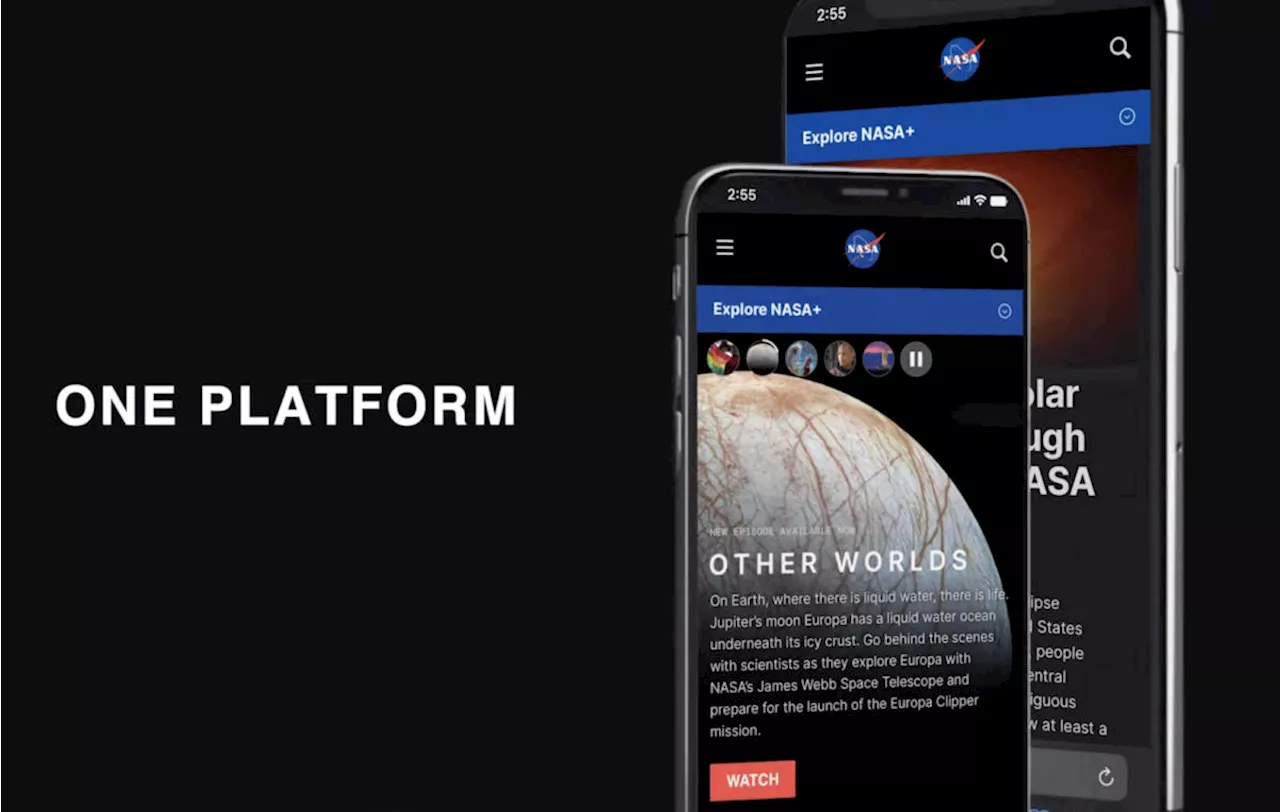 NASA will shut down NASA TV on cable to focus on NASA+Mariella Moon has been a night editor for Engadget since 2013, covering everything from consumer technology and video games to strange little robots that could operate on the human body from the inside one day. She has a special affinity for space, its technologies and its mysteries, though, and has interviewed astronauts for Engadget.
NASA will shut down NASA TV on cable to focus on NASA+Mariella Moon has been a night editor for Engadget since 2013, covering everything from consumer technology and video games to strange little robots that could operate on the human body from the inside one day. She has a special affinity for space, its technologies and its mysteries, though, and has interviewed astronauts for Engadget.
Read more »
 Why puffy exoplanets often dance with perfect rhythmRobert Lea is a science journalist in the U.K. whose articles have been published in Physics World, New Scientist, Astronomy Magazine, All About Space, Newsweek and ZME Science. He also writes about science communication for Elsevier and the European Journal of Physics. Rob holds a bachelor of science degree in physics and astronomy from the U.K.
Why puffy exoplanets often dance with perfect rhythmRobert Lea is a science journalist in the U.K. whose articles have been published in Physics World, New Scientist, Astronomy Magazine, All About Space, Newsweek and ZME Science. He also writes about science communication for Elsevier and the European Journal of Physics. Rob holds a bachelor of science degree in physics and astronomy from the U.K.
Read more »
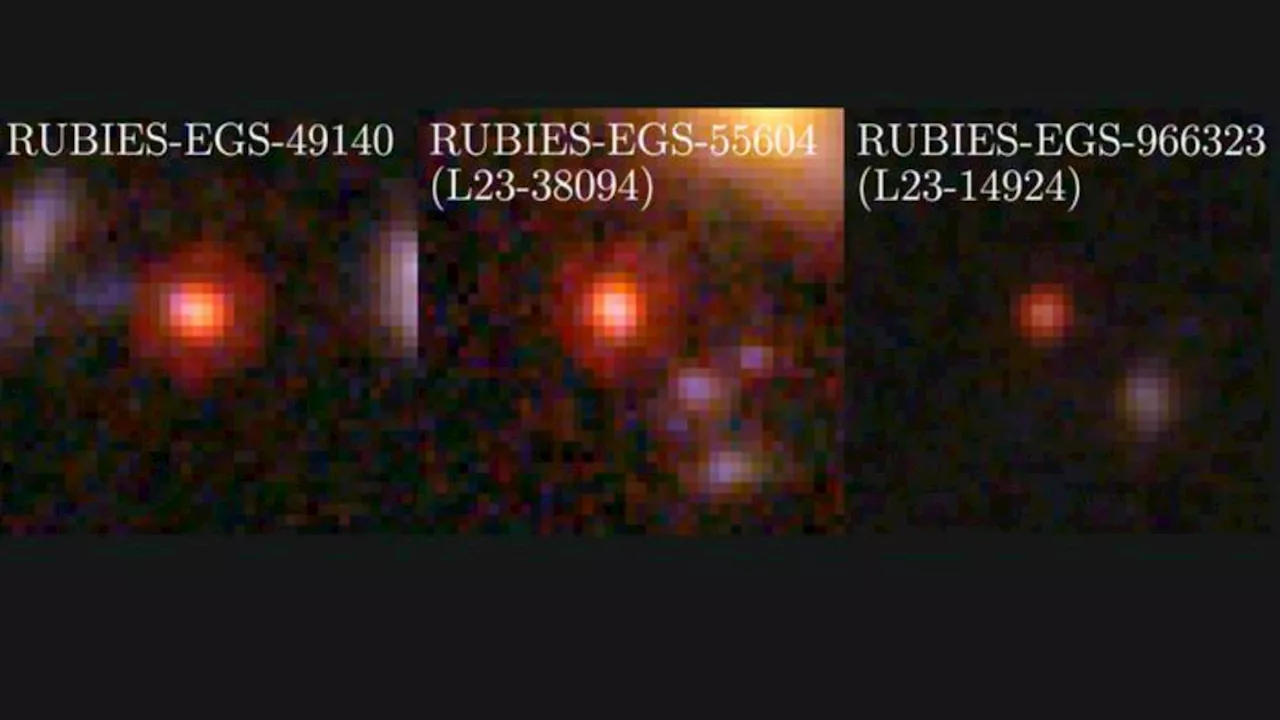 Forbidden black holes and ancient stars hide in these 'tiny red dots' (image)Robert Lea is a science journalist in the U.K. whose articles have been published in Physics World, New Scientist, Astronomy Magazine, All About Space, Newsweek and ZME Science. He also writes about science communication for Elsevier and the European Journal of Physics. Rob holds a bachelor of science degree in physics and astronomy from the U.K.
Forbidden black holes and ancient stars hide in these 'tiny red dots' (image)Robert Lea is a science journalist in the U.K. whose articles have been published in Physics World, New Scientist, Astronomy Magazine, All About Space, Newsweek and ZME Science. He also writes about science communication for Elsevier and the European Journal of Physics. Rob holds a bachelor of science degree in physics and astronomy from the U.K.
Read more »
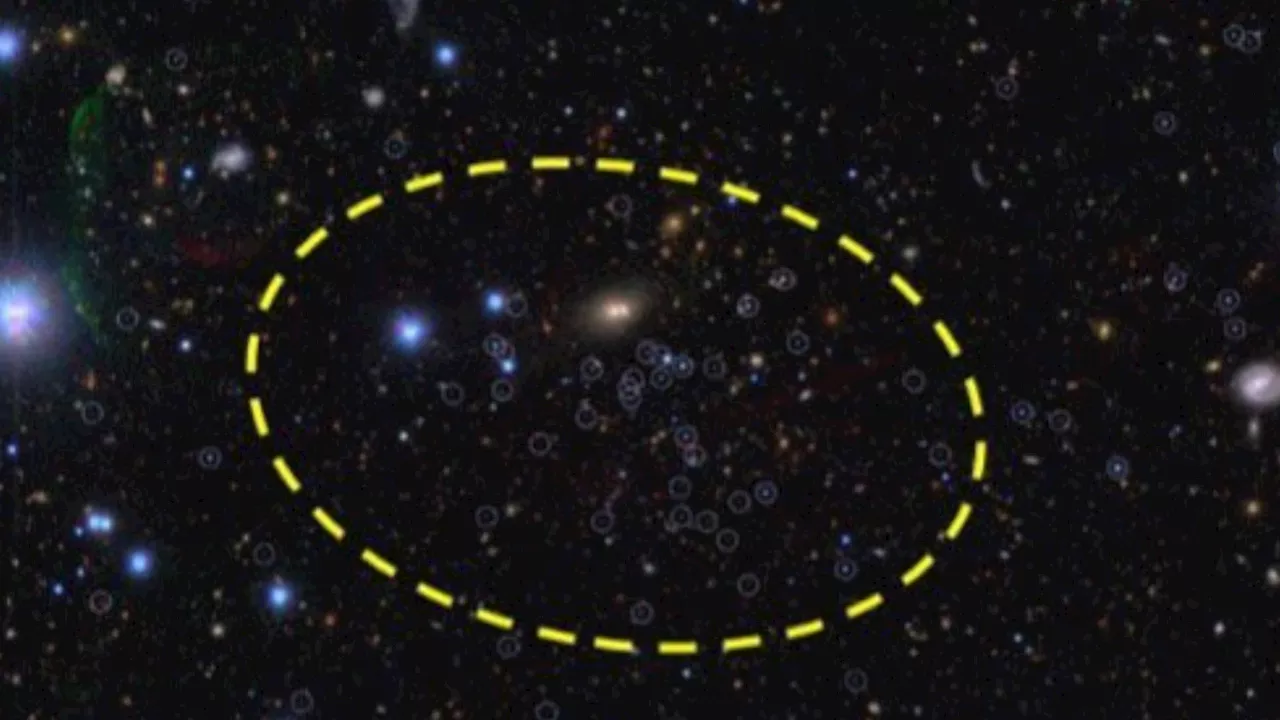 Scientists finally found 2 of the Milky Way's missing dwarf galaxies. What could this mean for astronomy?Robert Lea is a science journalist in the U.K. whose articles have been published in Physics World, New Scientist, Astronomy Magazine, All About Space, Newsweek and ZME Science. He also writes about science communication for Elsevier and the European Journal of Physics. Rob holds a bachelor of science degree in physics and astronomy from the U.K.
Scientists finally found 2 of the Milky Way's missing dwarf galaxies. What could this mean for astronomy?Robert Lea is a science journalist in the U.K. whose articles have been published in Physics World, New Scientist, Astronomy Magazine, All About Space, Newsweek and ZME Science. He also writes about science communication for Elsevier and the European Journal of Physics. Rob holds a bachelor of science degree in physics and astronomy from the U.K.
Read more »
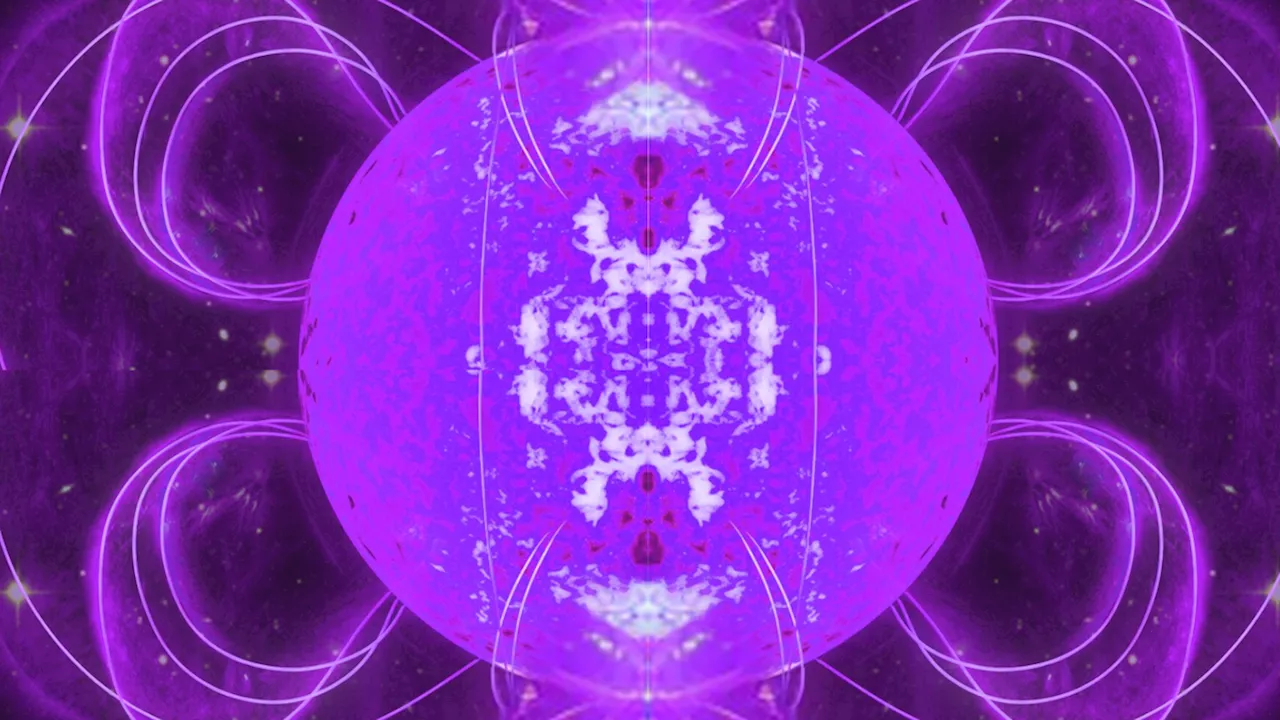 Mystery of dead stars' glitching 'heartbeats' could have a twisted solutionRobert Lea is a science journalist in the U.K. whose articles have been published in Physics World, New Scientist, Astronomy Magazine, All About Space, Newsweek and ZME Science. He also writes about science communication for Elsevier and the European Journal of Physics. Rob holds a bachelor of science degree in physics and astronomy from the U.K.
Mystery of dead stars' glitching 'heartbeats' could have a twisted solutionRobert Lea is a science journalist in the U.K. whose articles have been published in Physics World, New Scientist, Astronomy Magazine, All About Space, Newsweek and ZME Science. He also writes about science communication for Elsevier and the European Journal of Physics. Rob holds a bachelor of science degree in physics and astronomy from the U.K.
Read more »
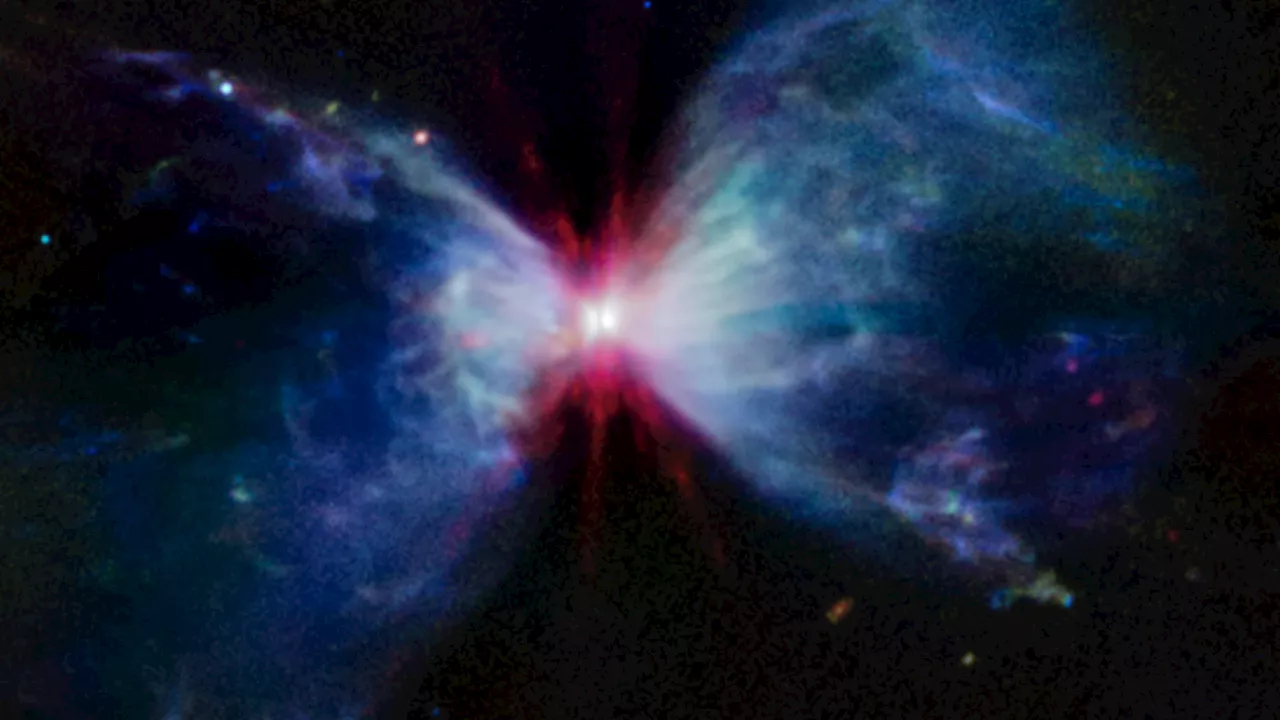 Happy 4th of July! Infant star creates red, white and blue fireworks in new JWST imageRobert Lea is a science journalist in the U.K. whose articles have been published in Physics World, New Scientist, Astronomy Magazine, All About Space, Newsweek and ZME Science. He also writes about science communication for Elsevier and the European Journal of Physics. Rob holds a bachelor of science degree in physics and astronomy from the U.K.
Happy 4th of July! Infant star creates red, white and blue fireworks in new JWST imageRobert Lea is a science journalist in the U.K. whose articles have been published in Physics World, New Scientist, Astronomy Magazine, All About Space, Newsweek and ZME Science. He also writes about science communication for Elsevier and the European Journal of Physics. Rob holds a bachelor of science degree in physics and astronomy from the U.K.
Read more »
